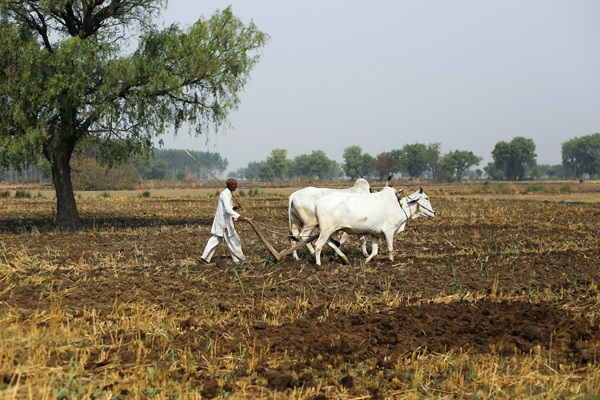.png)

Groupthink is the House View of BasisPoint’s in-house columnists.
June 10, 2025 at 9:43 AM IST
The southwest monsoon’s early arrival over Kerala and its rapid sweep across southern and northeastern India in late May sparked widespread optimism. It reached several regions nearly two weeks ahead of schedule, prompting hopes of a strong kharif sowing cycle, rural income revival, and benign inflation prints. Markets, policymakers and even the central bank appeared reassured.
In his June policy statement, Reserve Bank of India Governor Sanjay Malhotra pointed to the monsoon’s early onset and above-normal forecast as reasons to expect both rural demand and food inflation to behave favourably in the months ahead.
Yet the monsoon’s progress has since stalled. For nearly two weeks now, there has been little northward movement, and aggregate rainfall across the country has slipped below normal. Between May 24 and May 31, India received 55.8 millimetres of rainfall, nearly triple the long-period average for the period. But since June began, precipitation has sharply dropped. In the first nine days of June, rainfall was 29% below normal, and over the past four days, the shortfall widened to 71%. The weather department now predicts the monsoon to cover some more parts of central and eastern India around June 14.
This temporal mismatch, an early surge followed by an extended lull, is not uncommon, but it does pose challenges when early expectations have already been baked into market outlooks and policy assessments. Even though the India Meteorological Department continues to project an above-normal monsoon, the skewed distribution raises questions about sowing quality, spatial coverage, and eventual crop outcomes.
Growth Risks
For the moment, both inflation and growth forecasts are assuming the best-case scenario. The RBI expects 2025-26 GDP growth at 6.5%, helped by recovering rural demand. It also expects consumer inflation to gradually ease, with food inflation remaining range-bound. These assumptions lean heavily on the expectation of a good monsoon, not just in aggregate but in terms of its spatial and temporal spread.
Yet, the lived experience of Indian agriculture often turns on intra-season volatility. If the monsoon’s momentum does not resume soon, especially in central and northwestern India, early sowing in states like Maharashtra, Andhra Pradesh and Tamil Nadu may not translate into a healthy yield. Rainfed regions could face seed germination failures or be forced into re-sowing, raising input costs for farmers. Kharif acreage may end up lower than hoped. And if rainfall remains inconsistent, the risk of supply-side inflationary pressure later in the season will resurface, especially in perishables and pulses.
The policy challenge, then, is not just about whether the monsoon is normal but about managing the asymmetry in its performance. With reservoir levels still healthy, India is in a relatively strong position to handle early rainfall deficits. But government procurement, public distribution, and rural livelihood strategies must remain flexible. Over-optimism at this stage could result in under-preparedness later, should monsoon volatility persist.
Crucially, monetary policy may also need to navigate this with nuance. The June policy’s dovish pivot, with a 50-basis-point cut in the repo rate and a 100-basis-point reduction in the cash reserve ratio, relied in part on a benign inflation outlook underpinned by expectations of a good monsoon. If rainfall shortfalls begin to affect food prices in July or August, the central bank may face criticism for acting too soon or too confidently. For now, inflation expectations are reportedly softening, especially in rural areas. But these are quick to reverse in response to food price shocks.
The early promise of the monsoon season is a welcome signal, not a guarantee.
With rainfall still below par for the season and spatial coverage patchy, both fiscal and monetary policy must keep contingency plans close at hand. As last year demonstrated, strong finishes are possible despite mid-season breaks. Yet, the lesson for this year is clear. The window for recovery remains open, but so does the risk of disappointment.




